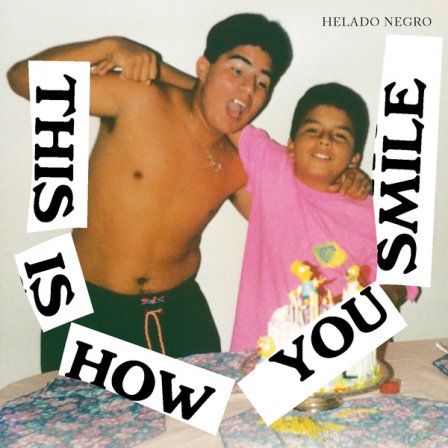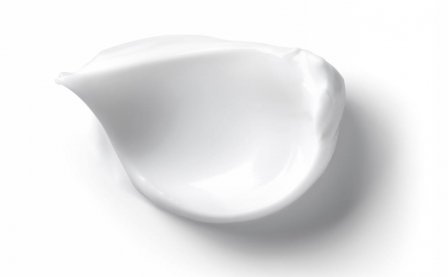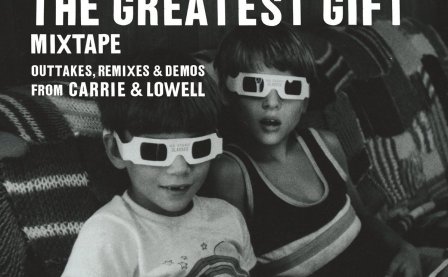Can you find yourself in Helado Negro? I try to find myself in Helado Negro. Is it easy? It was, listening to his debut LP Awe owe as a newly-arrived latinx migrant in Europe. It was late 2009, you could get by on that post-Western pop vibe. It was all about sincere appreciation and progress through mixture, in the mold of Brazilian tropicália. Hyper-modern cosmopolitism as the only way to be authentically local. With Animal Collective, El Guincho, M.I.A., and Vampire Weekend blurring the boundaries between indie, pop, electronic music, and autochthonous/global rhythms, it only made sense for an Ecuadorian-American to make music like this. A collage as radical, mutable, contingent, and alive as his identity. Acoustic instruments and Caribbean grooves wrapped in lo-fi beats. Sounds of parents returning to an imagined homeland, the boiling suburbs of South Florida as canvas. We were both in our twenties, perhaps overoptimistic, possibly naïve. Our names sounded alike. We had roots in the Andes. I found myself in Helado Negro.
A decade later, I still try. Back in the Americas, though not my place of birth, I continue to listen to Helado Negro’s music. What do I find? Transformations. Things got grittier, sparser, loopier. The lyrics turned opaque as enunciation lost precedence to mood. College roommates gave way to high-profile collaborations (David Byrne, Mikael Jorgensen, Jan St. Werner, Julianna Barwick). Invisible Life and Double Youth crowned that era. In parallel, Roberto Carlos Lange built himself a home that could fit Ecuador and the U.S. in their many variations, real and imagined, inherited and earned. The Island Universe Story album series embodied that place. An ever-growing collection of scraps, mementos, experiments, and curios, the subterranean rumblings of Lange’s beguiling discourse. Of course, such neatly arranged compartments were no match for reality. Whatever held them in place, it came off in 2016. We can tell by looking at the music. Private Energy, Helado Negro’s last album until This Is How You Smile, was a reaction to that shock. A primal scream of an album, an act of resistance framed through reaffirmation. Perhaps the dawn of a new, hard-fighting Lange? He had written “Venceremos” over a decade ago. Were these transitory phases? This is when I got to see him live. I caught him as a guest artist in Devendra Banhart’s show, in a latinx festival actually called Tropicalia. We were on opposite sides of the stage, wearing “Young, Latin and Proud” t-shirts, singing. I could still find myself in Helado Negro.
Where does this trip take us now? Can anyone still find themselves in Helado Negro? No wonder This Is How You Smile is Roberto Carlos Lange’s most anticipated album. The political gestures of Private Energy fit a narrative that heightened Lange’s profile, putting him in a role he might have been ready and willing to play, but only on his own terms. He may have written his “Negro é lindo” in “Young, Latin and Proud,” but This Is How You Smile would not be a By All Means Necessary, nor an I ain’t marching anymore. Amid those questions, Lange turned his gaze inward and found an answer in soul. Compassion, respite, camaraderie, and solidarity are what Lange is offering today, what he thinks we can use the most. Again, reaffirming one’s Latinidad is not a form of defiance in hostility, but in love. Celebrating the minuscule, the joys of quotidian life, is not a plea for passivity, inaction, or escapism. In fact, those might be the most radical actions one can perform today. No question, This Is How You Smile is a love album, a happy album in spite of everything and anything else. It’s there in the title. Instructions for sanity and joy can be simple to follow. Roberto Carlos Lange seems to have it figured out. I want to find myself in Helado Negro.
Clarity and experience make for a powerful mixture. Indeed, the template for This Is How You Smile is the legendary “conscious soul” albums of the 70s, the masterpieces of urban portraiture that Mayfield, Gaye, and Wonder crafted in that decade. In this album, we get Helado Negro’s take on that. Which means that instead of “Tu abuela es young, Latin & proud,” we hear “I see you in my hands everyday” or “Brown don’t go/ Brown just glow,” the latter as empowering proclamations of pride in one’s inheritance, if a smidgen less literal. It makes perfect sense for Lange’s most topical album to also be his most hazy, oblique, and poetic; touching and personal but still firm and combative, tender and reflective yet never melancholic. Actually, Lange’s confidence and command of his voice is such that he gets to experiment with song forms as well. “Please Won’t Please” is the type of tune you can belt out Springsteen style; at least a quarter of the songs on the LP are outwardly acoustic (“Sábana de luz,” “Imagining what to do,” “País nublado”), while another bunch of them are rotund enough to flirt with shades of R&B (“Seen my aura,” “Running”); and the rest of the tracks deconstruct what exists in those intersections. In sum, nothing short of the wondrous amalgams that formed Double Youth or Canta lechuza. In confusion, Roberto Carlos Lange can always find himself in Helado Negro.
What is the sound of the Latinx experience today? This Is How You Smile is, no doubt, a facet of that. Soulful yet danceable beats, strings and keyboards sounding folclóricos, foggy lullabies of places we can all call home. Should I find myself in that gentle, resolute harmony? Can anyone? Is it as fictitious a proposition as the Island Universe? A fleeting state to strive for? That we need to ask those questions, perhaps to no end, might be the greatest piece of wisdom This Is How You Smile intends to pass on. Intense contradictions shape the identity of Latinxs. “Fantasma Vaga” makes more sense as a phrase in English. No family fiesta would ever play “November 7.” Roberto Carlos Lange and myself look and sound nothing alike, yet I get compliments for my Spanish in Long Beach and he is branded a medio gringo whenever he crosses the border South. Nevertheless, we share with the other more than with either Ecuadorians or Bolivians or Americans or any combination thereof. Something immaterial. Perhaps an aura. No mystery worth something is easy to interpret. The best can never be cracked. Can you find yourself in Helado Negro? I find myself in Helado Negro. Is it easy? It is if you cloud the mirror just a little.
More about: Helado Negro




